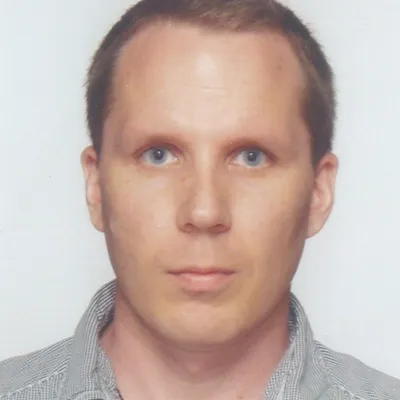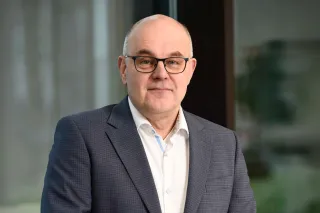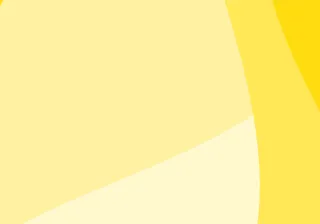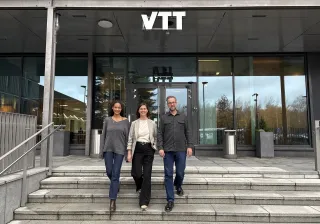VTT is developing hyperspectral cameras and radar technology that allow us to see many things we could not detect before. New imaging technologies help us measure the ripeness of harvest, diagnose illnesses and identify security threats.
Smart imaging technologies will revolutionise our everyday life in many ways in areas ranging from agriculture, security and rescue services to healthcare.
At VTT, we are developing relevant technologies, such as hyperspectral cameras and radar technology. New technologies, often using machine learning and big data, give us a new perspective on objects both very close (our skin and body) and very far away (the atmosphere and space).
Radar technology will be introduced into totally new walks of life, such as monitoring of human vital signs. Hyperspectral cameras, on the other hand, help us identify materials and concentrations of chemical substances from afar.
One of VTT's specialities are miniature-scale hyperspectral cameras that bring smart sensing even to mobile applications for consumers.
From harvest forecasts to space technologies
Hyperspectral imaging measures the electromagnetic spectrum for each pixel in the scene. The technology reaches beyond the wavelengths of RGB colour space and visible spectrum, so it helps us see things we would not see otherwise.
Hyperspectral technologies produce remotely readable data of, for example, the health and humidity conditions of plant populations or concentrations of chemical substances, which can boost agriculture, for example.
Satellite or drone images can reveal how strong growth is in different parts of the field or how moist the soil is. The field can be fertilized precisely and effectively, without causing unnecessary eutrophication in water bodies. Hyperspectral cameras recognise when the harvest is ready, and they can be used for examining plant diseases and occurrence of pest insects.
The technology is also applied for waste separation, such as for identifying various types of plastics. Specim, company that originated from VTT, has made a hyperspectral camera for, for example, Fortum’s waste separation line to increase the effectiveness of sorting.
Hyperspectral imaging enables identification of materials and chemical concentrations even from much further distances. In collaboration with the European Space Agency, VTT is developing subsystems to a next-generation ALTIUS satellite which will measure the concentrations of gases important for the monitoring of climate change in the atmosphere. We are also involved in developing a small-size camera that would fly from a parent satellite to an asteroid to scan its minerals.
New perspective on illnesses
Healthcare will also benefit from the “sixth sense” provided by hyperspectral imaging. If, upon examining a mole or skin lesion, it was possible to tell right away what it is all about, no unnecessary procedures would be needed and the treatment could be targeted right.
The health technology corporation Revenio has licensed the technology developed at VTT based on which dermatologists can identify skin cancers and their early stages. Päijät Häme Central Hospital has been diagnosing melanomas using the technology for almost 10 years. Thanks to efficient diagnostics, the extent of a mole can be defined so precisely that even the subcutaneous melanoma cells can be removed and the mole can be cut precisely in only one surgery operation.
Healthcare applications have a huge potential to enhance human wellbeing. The development work takes time because the applications must be highly reliable.
Applications beneficial for health may also be brought to mobile phones. For example, imagine an application that measures the sunscreen protection factor on your skin or detects gingivitis or caries in your mouth.
These are just some preliminary ideas. At this stage, we can hardly imagine the whole potential such applications might have. We can already produce hyperspectral technology components that fit into mobile devices. In the next phase, we need partners to develop industrial processes and commercialise solutions.
Radar measures also micromovement
In most people's minds, the word radar evokes an image of a slowly rotating device on the roof of a ship or air traffic control tower. However, modern radars are much more than that. They can be implemented in a small scale and embedded in various devices and systems.
At VTT, we are developing a novel MIMO radar technology, which enables very fast electronic scanning and image formation. Radars operating in the millimetre wave bands produce information resembling 3D image on their environment. The radars can measure very rapid changes and small movements, such as structural vibration, human breathing and heart beat.
We are carrying out the whole development process – from microchips to algorithms – ourselves. Machine learning and artificial intelligence lie at the core of the new technology. The first application was an assistive radar device for the visually impaired. The second one was a collision prevention system for drones. At the moment, we are developing and applying radar systems to sleep research, positioning in rail traffic and detection of small unmanned aerial vehicles.
The benefits of VTT's technology include the imaging speed and easy scalability to larger apertures to produce increasingly accurate and detailed radar image. Radars perceive the environment in great detail even in the dark, rain, smoke or fog.
Radars can detect drones from afar and identify potential threats. Radars can also be used for positioning in situations where satellite navigation is not possible. It can be used for mapping the environment, help rescue workers in wildfires or to find people in the middle of a fire. Other applications include vibration measurements of structures and condition monitoring of machinery in industry.
Remote monitoring of vital functions
Advanced radar technology is also entering walks of life you would not come to think about when discussing radars.
Since radar signal penetrates thin obstacles, such as layers of clothing, and radars detect minor movement, it enables remote monitoring of human vital signs.
Radars can detect movement as small as hundredths of a millimetre, thus also enabling the measurement of heart rate and heart rate variability. We are the first ones in the world to succeed in remotely measuring the vital functions of several people at the same time using radar based sensing.
Remote monitoring is needed both in healthcare and research. Let us think about, for example, sleep monitoring, or polysomnography (PSG), in which the sensors and wires alone may disturb sleep. Remote monitoring gives peace to sleep and produces better data.
The new imaging technologies change the way we see the world. Based on our research, customer companies may create products and applications than can be commercialised to both business and consumer use.
Pekka Rantakari acts as Research Team Leader in the Antennas and RF technologies and Heikki Saari as Principal Scientist in microspectrometers. If you are interested in developing imaging technologies with us, do not hesitate to contact us.
Watch our video: Seeing beyond the obvious with high performance imaging technologies







